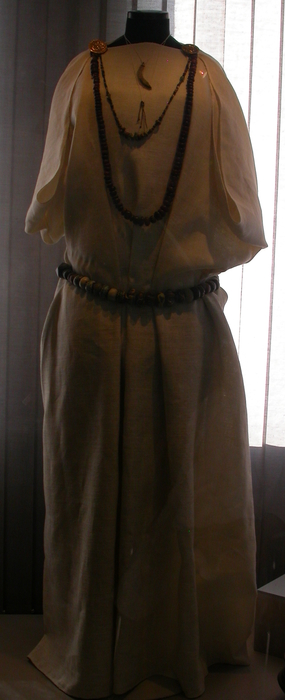
This one is a burial dress from the Princess of Zweeloo
, a woman who lived about 500 AD. Six people and six armored horses have been recovered from this graveyard.
T
Upstairs, we found the museum's own claim to fame: artifacts from the Netherlands, particularly bog people. Bogs preserve soft tissues remarkably well, and some amazing artifacts have been dredged up as the peat is harvested.

This one is a burial dress from the Princess of Zweeloo
, a woman who lived about 500 AD. Six people and six armored horses have been recovered from this graveyard.
T
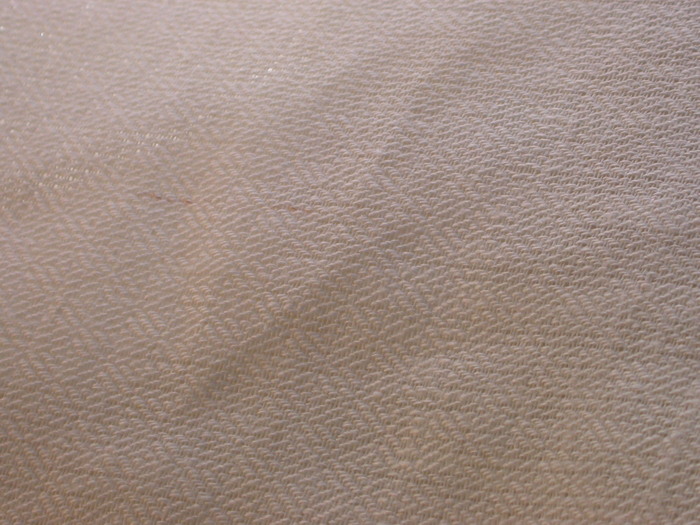
The fabric under the pins was preserved well enough to see the weave, which was faithfully reproduced. It took construction of a special loom and three months to weave the fabric. The count is 18 threads per cm, for anyone who has a few months to spare and wants to give it a go.
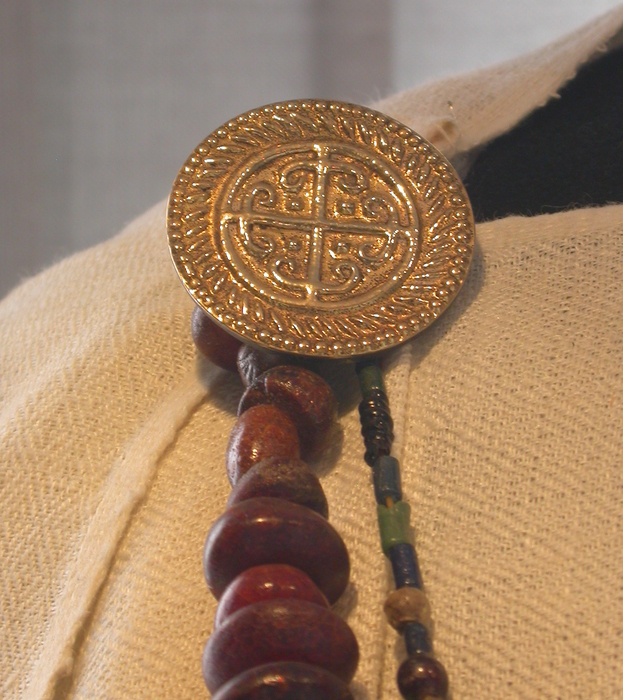
The bronze clasp at her shoulder. In addition to these ornaments, she had two keys, a bronze bracelet, a thin silver ring, and a beaver tooth worn as an amulet.
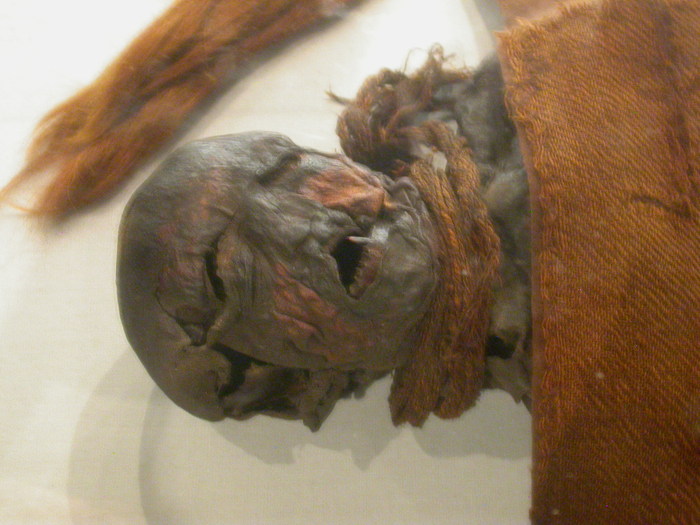
The best of the Drents Museum bog bodies, the meisje van Yde
(the girl from Yde). She was very well preserved when she was brought to the surface of the bog in 1897, but the frightened peat-cutters mutilated the body before its importance was understood. It is now known that the girl from Yde was 16 years old when she died, 2000 years ago. She had scoliosis and probably had an abnormal gait, which may be why she was sacraficed. Half of her head was shaved, the other half had long red hair. She was found with a braided band wrapped three times around her neck, as well as a knife wound near the collarbone, and tied to a large piece of oak wood and sunken in the bog. The exact cause of her death is not known, but it is very likely that she was killed, possibly because she had committed some crime, but more likely as a human sacrafice.
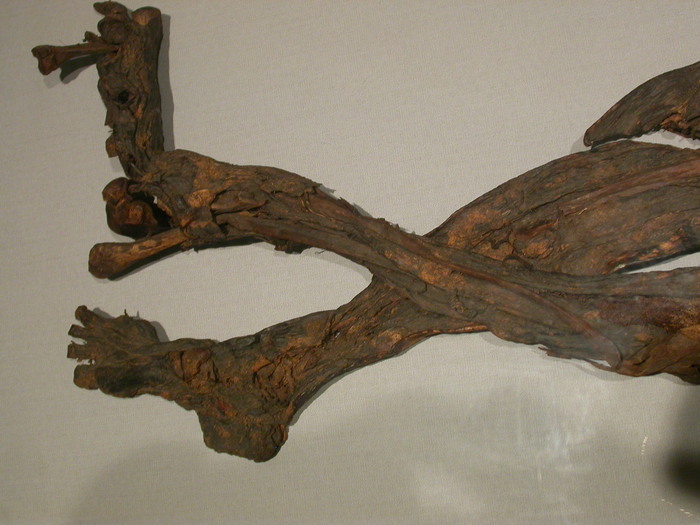
These legs belong to one of the most unusual bog bodies: it was one of a pair. At first, the Paar van Weerdinge
were assumed to be a husband and wife, but analysis of the bones showed that they were both men. It was speculated that they might be brothers, but recent DNA analysis shows that they were not closely related. The relationship between the men will probably never be known. They lived around 450 BC, nearly 500 years before the meisje van Yde. The likely cause of death was a stab wound in the chest. Unfortunately, glare on the glass precluded getting a decent picture of the rest of the pair.
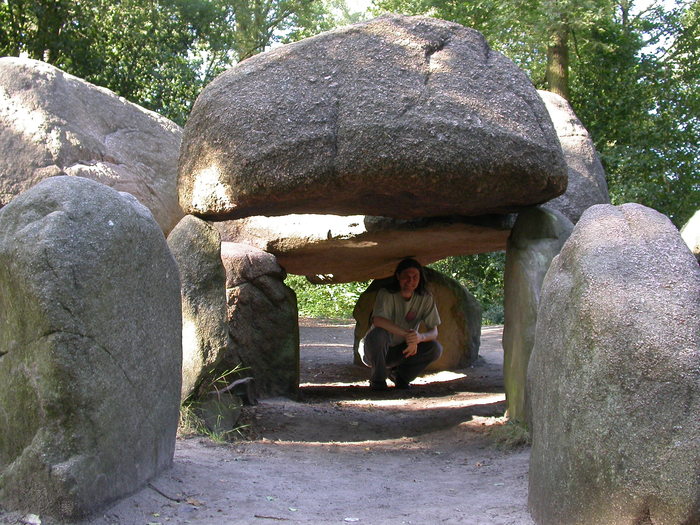
Originally, it was assumed that the hunebed was exposed, as it is here. However, recent evidence shows that it was primarily an underground structure. Rocks were stacked up, and the floor dug out below them and dirt piled up on top of them, to form a semi-underground chamber. Wooden floor boards have been found below one of them, suggesting a height in the chamber where a man can stand comfortably
. Some were used for burial, although it is not known for what other purposes they might have been employed.